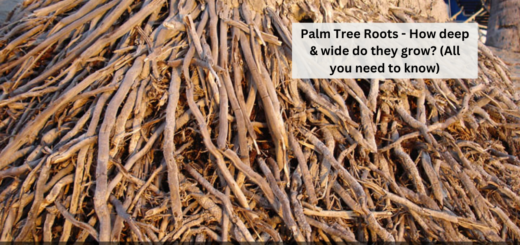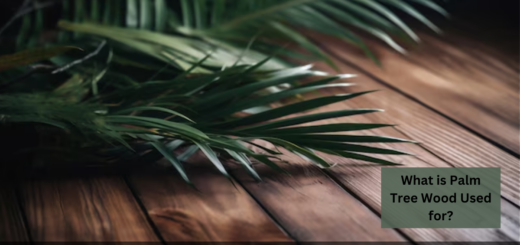How to apply Epsom Salts to Palm Trees? – Is it good or not?
Hey folks! Welcome back!
I hope you are doing great in your gardening field. Do you know about the Epsom salts? Do you know How to apply Epsom Salts to Palm Trees? Is applying Epsom Salts to Palm Trees good or not?
One of the main problems with developing palm trees is the yellowing of the leaves caused by a deficiency in magnesium. Epsom salt can be used to treat magnesium deficiency, which is a great solution to this problem. In what ways can Epsom salt be applied to palm trees?
Quick takeaways:
- Epsom salt typically benefits palm trees. Your potted or in-ground palm plants can benefit greatly from fast spraying of the salt solution to increase their magnesium levels.
- The green pigment present in trees, chlorophyll, is produced with support from the magnesium found in the salt.
Let’s begin this guide to learn more about it.
What Is Epsom Salt?
Epsom salt is magnesium sulfate which is an important component that is made up of sulfur and magnesium. It holds various advantages and is also used in various medicines and agriculture.
Also, you can make use of it for treating health issues related to constipation, and aches in muscles or if magnesium is deficient in humans and plants as well. Especially some of the plants that will benefit from the Epsom salt such as tomatoes, potatoes, carrots, roses, and palm trees.
They do not produce odor. You should be happy to know that it will not affect the pH level of the soil in the plant. Last, but not least, it is the best supplement for magnesium-hungry plants.
How to apply Epsom Salts to Palm Trees?
One gallon of water needs to be thoroughly dissolved with one tablespoon of Epsom salt. Pour the mixture around your palm plants two to three times a year to maintain the leaves healthy and there are various varieties of palm trees.
Directly apply Epsom salt to the region surrounding outside palm trees. Then, water the area twice a week to aid in the solid salt’s soil-dissolving process.
To know more, keep on scrolling and reading further!
How to Apply Epsom Salts to Palm Trees Grown Indoors?
- One teaspoon of Epsom salt should be added to one gallon of water in a bucket. Utilizing a mixing stick, carefully combine the solution.
- Place your potted plant in a dirty water sink and water it gradually until some of the solutions leak out of the drainage holes in the pot.
- Wait until the saltwater solution has completely drained.
- Before returning your potted palm tree to its growth site, repeat the watering procedure three to four times.
- At least twice to three times a year, apply Epsom salt to your palm trees.
- I would suggest applying Epsom salt pellets or powder straight to outdoor trees as fertilizer. Because inground palm trees grown outside can be very tall and may need a lot more fertilizer, the amount may vary based on the size of the trees.
How to Apply Epsom Salts to Palm Trees Grown Outdoors?
- Spread 2 to 6 pounds of Epsom salt evenly all over the palm palms’ root systems.
- The precise quantity of Epsom salt you need will depend on how big your palm trees are. Use 2 pounds of salt, for instance, for trees that are 8 to 10 feet tall.
- Pour clean water over the region after applying salt to the root zones to help the salt dissolve and promote absorption.
- For best outcomes, perform the entire procedure at least three more times annually.
Is Epsom salt good for palm trees?
- Epsom salt helps palm trees when the soil or the plant ultimately lacks magnesium. It is essentially 13% Sulfur and 10% magnesium crystalline magnesium sulfate.
- Add an Epsom salt solution to your palm trees to help them absorb more magnesium. Magnesium plays a key role in the production of chlorophyll, the pigment that gives palm palms their natural evergreen tint.
- Epsom salt will immediately resupply the soil with magnesium because it is a water-soluble salt, keeping your palm trees looking lush and lovely.
- Because Epsom salt has a high pH and will raise the soil’s salinity levels, it is not advised to use it on soil that is already salty. Palm trees’ ability to absorb water is hampered by salinity-increased soil.
- Moreover, whether your palm trees are indoors or outdoors, using only Epsom salt to cure them is insufficient because doing so could deprive them of essential minerals including iron, manganese, potassium, nitrogen, and phosphorus.
- If you use too much Epsom salt, you risk damaging your soil. Your plants may experience stunted development, dark foliage, and a scorching or scorched root system based on the severity of the imbalance. They might therefore find it challenging to absorb calcium from their environment.
- Epsom salt can be used as a water conditioner or for soaking because it is a granular substance. Epsom salts should ideally be used in dry form with 2 teaspoons per cubic meter of tree area if you want your trees to thrive in them.
When Is Epsom Salt Good For Palm Trees?
Epsom salt is amazing for the palm trees. It is because these plants lack magnesium, so these salts will fulfill that requirement of the plant.
Magnesium will play a major role in developing the level of chlorophyll in the plant because it helps in building the green pigmentation in the plants.
In simple words, magnesium will help in providing green color to your beautiful palm trees. If you observe that the leaves have begun to turn yellow, then is the right time to provide the Epsom salt to the plant as it will provide it with a good amount of magnesium to the palm trees.
Last but not least, provide Epsom salt to the palm trees in sufficient quantity so that the plant does not get damaged.
Benefits of Epsom Salt for Palm Trees
Some of the benefits of Epsom Salt for Palm Trees are as follows:
- One of the benefits is that it will encourage more greens in the foliage as it will boost the production of chlorophyll which will help in the green pigmentation of the leaves.
- It will prevent curd leaves in the plants. So this salt can be used for preventing leaf curling in palm trees.
- Also, it helps in improving the nutrient value of the plant.
- It will neutralize the pH level of the soil in the plant by neutralizing it.
- It even can treat the transplant shock of the palm tree.
- Last, but not least, it helps in determining the pests from the trees.
Wrapping up the Context
Epsom salt, when used properly, may be really good for your palms. Depending on the type of deficit, it either treats or prevents a magnesium deficiency. Magnesium sulfate should be applied to the soil and plants to allow the sun to shine and the grass to stay green.
When Epsom salts are not used, most plants, including peppers, tomatoes, and roses, will benefit fully. However, there are some places where Epsom salts shouldn’t be utilized.
Thanks for reading! Happy gardening!
FAQs
1. How much fertilizer do you put on a palm tree?
The fertilizer requirement of the palm tree is the slow-release fertilizer of 12-4-8. You can provide this to your palm trees once a month. But do not give them excess fertilizer that can harm their growth.
2. How much Epsom salt do you put on date palms?
You have to pour the Epsom salt for about 2-4 pounds on your date palm and water the plant when it becomes dry.
3. Is Epsom salt good for plants?
Yes, Epsom salt is good for plants as they get to benefit from it. The plants that enjoy its benefits are palm trees, potatoes, roses, carrots, etc.


